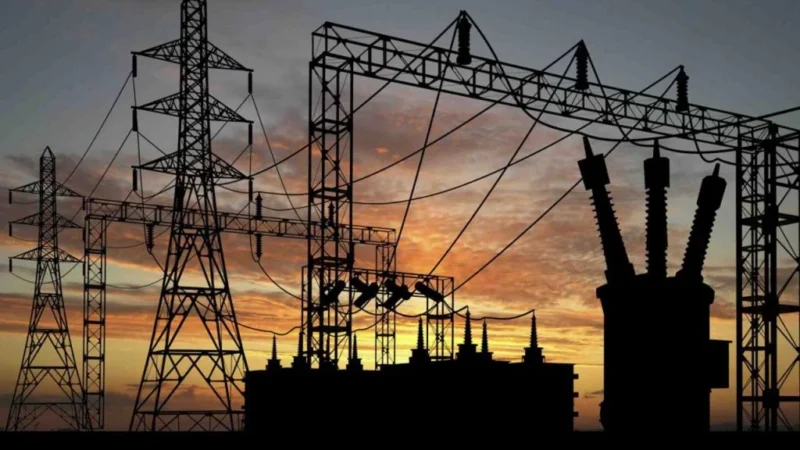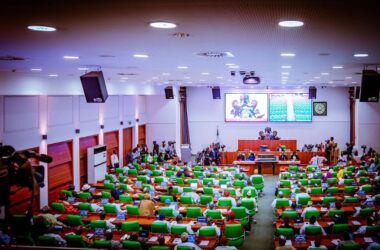In response to Nigeria’s repeated national power grid failures, Minister of Power, Adebayo Adelabu, has directed the immediate overhaul of outdated equipment across the energy infrastructure.
This directive aims to prevent further disruptions in the national grid and enhance electricity reliability nationwide.
Adelabu has set a target of six months to replace aging components as part of a broader strategy outlined by an inter-agency committee established to study grid instability and propose lasting solutions.
This decision follows the latest grid collapse on November 7, 2024, around 11:29 a.m., when a sudden frequency surge caused widespread power outages across the country.
The surge was detected by the Transmission Company of Nigeria (TCN), which reported a frequency jump from 50.33Hz to 51.44Hz. TCN stated that the spike originated from one of its substations, leading to an immediate shutdown to avoid further complications.
In a statement, Adelabu’s Special Adviser on Strategic Communications and Media, Bolaji Tunji, conveyed the minister’s firm commitment to implementing the committee’s recommendations, noting these steps will provide a “lasting solution to the incessant power grid collapses” both in the short and long term.
According to the committee’s report, factors contributing to the frequent collapses include outdated equipment, poor maintenance practices, and a lack of robust infrastructure for grid management.
The committee’s recommendations for stabilizing the grid have been categorized into short, medium, and long-term actions. Within the next month, immediate efforts will focus on revising relay settings at critical points, training operational staff, and enhancing maintenance procedures.
Key mid-term goals, to be completed in six months, include replacing old equipment, strengthening relay coordination, upgrading telecommunication systems, and attracting private sector investment to improve grid infrastructure.
Long-term initiatives involve introducing smart grid technology, integrating renewable energy sources, and modernizing the distribution network.
While repair work is ongoing, TCN warned that grid instability might persist temporarily. Ndidi Mbah, TCN’s General Manager of Public Affairs, explained that significant upgrades on several critical transmission lines and substations are in progress, which could temporarily impact grid stability.
“Recovery efforts began immediately, and the Abuja Axis was restored within 28 minutes. Recovery is still ongoing,” Mbah said in a statement, even as many said they were yet to get power supply since the first grid collapse on Tuesday.
“The frequency spike was caused by issues encountered at one of TCN’s substations, which had to be shut down to prevent further complications. In addition to this, we are actively engaged in significant repair works on several critical transmission lines and substations. This includes the 330kV transmission lines along the Shiroro–Mando axis, major upgrades at the Jebba Transmission Substation, and the restoration of the second Ugwuaji–Apir 330kV transmission line.
“Furthermore, following the submission of the investigative report on the causes of previous grid collapses, we have begun addressing the identified weaknesses in the transmission system. Efforts are being made to close the gaps highlighted in the report, and to enhance the overall stability and resilience of the grid. These efforts include both technical upgrades and strategic interventions based on the committee’s recommendations,” Mbah said.
“The Transmission Company of Nigeria wishes to inform the public that the national grid experienced a disturbance at approximately 11:29 AM this morning, caused by a sudden rise in frequency from 50.33Hz to 51.44Hz.
“Recovery efforts began immediately, and the Abuja Axis was restored within 28 minutes. Recovery is still ongoing. The frequency spike was caused by issues encountered at one of TCN’s substations, which had to be shut down to prevent further complications.”
“Following the submission of the investigative report on the causes of previous grid collapses, we have begun addressing the identified weaknesses in the transmission system. Efforts are being made to close the gaps highlighted in the report and to enhance the overall stability and resilience of the grid.
“TCN is actively engaged in significant repair work on several critical transmission lines and substations. This includes the 330kV transmission line along the Shiroro–Mando axis, major upgrades at the Jebba Transmission Substation, and the restoration of the second Ugwuaji–Apir 330kV transmission line.”
“However, it is important to note that while these repairs and improvements are underway, some degree of instability in the system is likely to persist until all major works are completed.”
“Efforts are being made to close the gaps highlighted in the report, and to enhance the overall stability and resilience of the grid. These efforts include both technical upgrades and strategic interventions based on the committee’s recommendations.
“The company remains committed to improving the reliability of the electricity supply, recognising the vital role that stable power plays in Nigeria’s socio-economic development.
“TCN acknowledges the impact of these disruptions and kindly asks for the understanding and patience of the public during this challenging period.”
“TCN assures the public that all necessary measures are being taken to ensure the grid’s long-term stability, in line with the recommendations of the investigative committee, while also addressing infrastructure damage such as vandalized transmission lines,” the statement concluded.
The recent grid failure marks the eleventh collapse this year, underscoring the urgent need for upgrades. The National Orientation Agency (NOA) attributed part of the problem to load rejection by some electricity distribution companies (DisCos), which affects grid balance and heightens the risk of collapse.
The NOA noted that the grid has a transmission capacity of over 8,000 megawatts, yet actual distribution remains around 4,000 megawatts due to infrastructure limitations among the DisCos.
In an effort to expand Nigeria’s power capacity and stabilize supply, the government has also allocated $800 million towards building new substations and expanding distribution lines through the Presidential Power Initiative.










